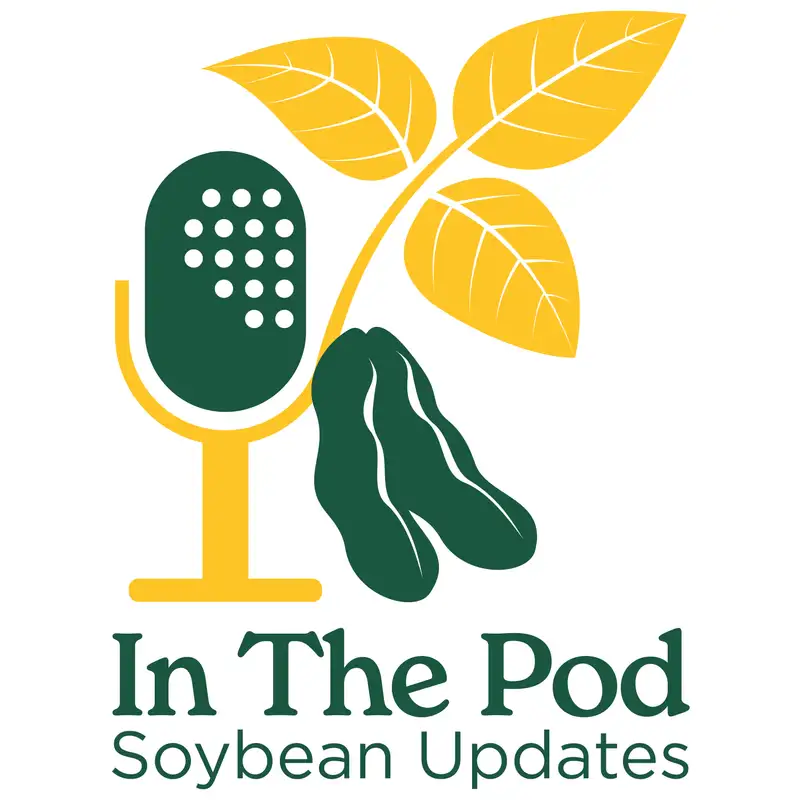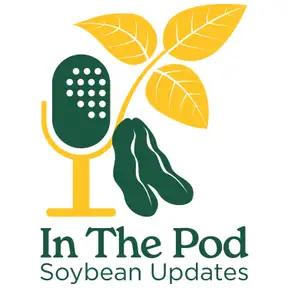07/03/25 Scouting Smarts: Stay Ahead of Soybean Insects
You're listening to in the pod, soybean updates, a weekly trek into the latest soybean information from NDSU Extension. The recent rain and cooler weather has helped slow down some insects, but they are regrouping according to Jan Knodel, NDSU Extension entomologist. Jan, how did the cool wet weather affect insect pests this spring?
Jan Knodel:Well, the cool wet weather can significantly impact insect pests. It can slow development and reduce reproduction. Cool wet conditions can promote fungal and bacterial diseases in insects. So we do see increase in diseases as well. We also see in like, in grasshoppers, they're not as active when it's cool. They can't fly.
Bruce Sundeen:So you're saying the weather benefited soybean farmers?
Jan Knodel:You know, we've seen this in the soybean fields out scouting. There's very few insect pests right at this moment. I know the weather is supposed to change to a hotter, drier cycle here in July.
Bruce Sundeen:When should producers scout the fields?
Jan Knodel:So you want to begin scouting in late June all the way through our sixth stage or full seed. Walk more than the field edges, walk into the field using a w pattern and look at the plants thoroughly. Usually we recommend scouting five sites and selecting five to 10 plants per site. We definitely want to scout routinely because some insects like soybean aphids can increase very rapidly, especially if the temperatures are moderate in the mid eighties. So we need to scout the fields frequently.
Bruce Sundeen:Jan, which insect is hardest on soybeans?
Jan Knodel:Soybean aphid is our number one pest of soybeans and it's usually found on the underside of the leaves. They feed by sucking the sap leading to stunted plants, reduced pods and seeds. Another problem we have with the aphids is that they've developed resistance to the pyrethroid insecticides. So you want to consider alternatives like Transform WC, Saphena, and Savanto Prime.
Bruce Sundeen:What can be done when there's insect resistance?
Jan Knodel:So there's several things we recommend to reduce the development of insecticide resistance in soybean aphids and that is scouting the fields regularly. Use the threshold to aid in decision making, preventing unnecessary insecticide applications and conserve natural enemies. Avoid using the lowest rate of insecticides on the label. Use the higher rates. Do not use a premix insecticide containing two insecticides of two different modes of actions because premixes typically have a lower amount of active ingredient per the insecticide.
Bruce Sundeen:What other insects cause problems for soybean producers?
Jan Knodel:The next insect pest is the bean leaf beetle. This is one that is increasing in North Dakota, and we're seeing it spread further west in the state. So again, you want to scout all the way through the seedling stage through pod and seed development for bean leaf beetle. And you can use a sweep net to estimate populations, but the threshold is based on defoliation that the beetle causes. Grasshoppers is probably in third place right now for causing damage to soybeans. Again, this is a defoliator and you really need to scout throughout the whole field season. Consider treatment for the nymph or immature grasshoppers when the population reaches 50 grasshoppers per square yard in the field margin or 21 nymphs per square yard within the field. In late July, the adult grasshoppers will be out and then the threshold would change to the adults where you would treat if you reach 20 grasshoppers per square yard in the field margin or eight per square yard in the field.
Bruce Sundeen:Thanks, Jan. Our guest has been Jan Knodel, NDSU Extension entomologist. You're listening to In the Pod, Soybean Updates, a weekly trek into the latest soybean information from NDSU Extension supported by the North Dakota Soybean Council.

